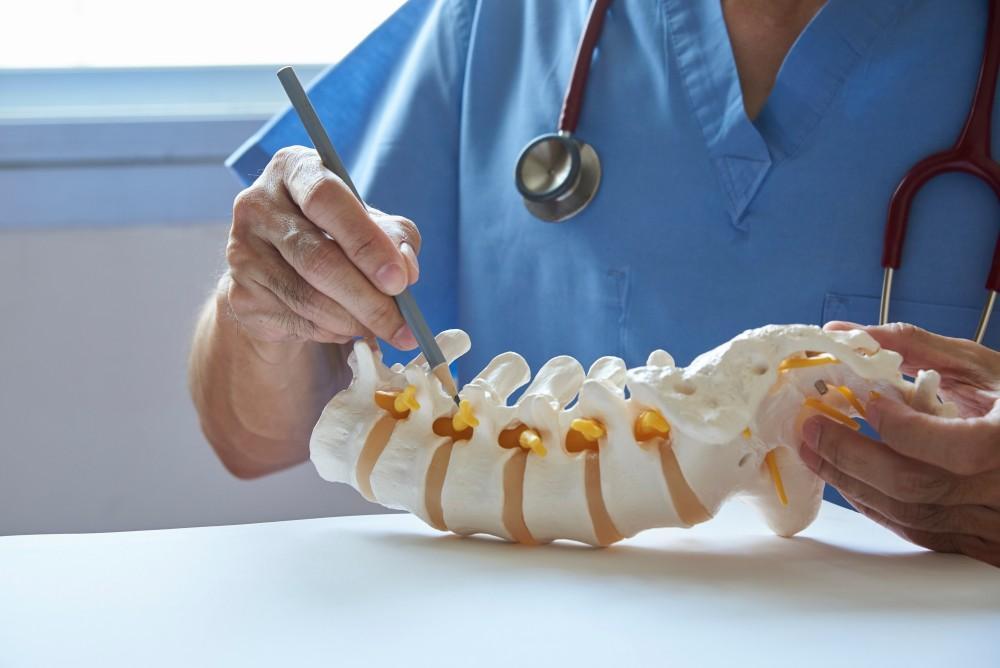
Seeking Low Back Pain Relief? ReActiv8® Therapy Could Be the Answer

Back pain is all too common. About 4 out of 5 people will develop back pain at some point during their lives. The pain may result from a wide variety of conditions, though injuries to the muscles and ligaments that support your spine are a leading cause.
At Vertrae®, board-certified neurosurgeon Dr. Kamal R. Woods and his staff see their share of patients in the Dayton and Springfield, Ohio, areas with lower back pain, including from pinched nerves, osteoarthritis, herniated discs, and spinal stenosis. But when the pain stems from the lumbar multifidus muscle that stabilizes the spine, they need to think outside the box for treatment options.
In June 2020, the FDA approved a new therapy, called ReActiv8®, an implanted pulse generator that targets the multifidus muscle. Here’s what the practice wants you to know about what it can do to help relieve your pain.
Spinal structure
Your spine is a long column of stacked bony vertebrae joined to each other by pairs of facet joints, and cushioned from rubbing against each other by pillow-like intervertebral discs. It’s divided into four sections:
- Cervical (neck)
- Thoracic (chest)
- Lumbar (lower back)
- Coccyx (tailbone)
Most pain problems develop in the cervical and lumbar regions because they’re the sections of the spine that move the most when you bend, twist, or flex.
The interior of the column contains a hollow tube called the spinal canal, through which the spinal cord runs, with peripheral nerves exiting the column to head to other body parts. If anything, such as herniated disc material, impinges upon spinal nerve roots, it can cause a lot of pain, numbness, and tingling along the entire nerve. It’s also common for this to occur when something narrows the spinal canal (spinal stenosis), such as bone spurs or osteoarthritis.
Your entire spine is supported by a vast array of muscles, ligaments, and tendons. If any of them weaken, it stresses your spine and puts your whole spine health at risk. This is what happens with the multifidus muscle.
How can ReActiv8 help my low back pain?
If your multifidus muscle doesn’t function correctly due to faulty stimulation from the spinal nerves, it can lead to mechanical chronic lower back pain (CLBP). ReActiv8 provides long-term relief by addressing the underlying issue.
ReActiv8 painlessly stimulates the nerves that serve your multifidus muscle and cause beneficial contractions, disrupting the cycle of pain and muscle degeneration.
Clinical trial data, published in 2021 in PAIN Journal, supports ReActiv8’s effectiveness. After one year, 64% of patients had their pain reduced by 50% or more, while 73% showed a 50% improvement in pain and/or disability. Overall, 78% of patients said they were “definitely satisfied” with the treatment.
Dr. Woods implants the ReActiv8 system in your lower back during a minimally invasive surgical procedure. He positions two electrical leads to stimulate the nerves that control your multifidus muscle, and the leads are connected to the implantable pulse generator which he places just under the skin either in the upper buttock or lower back area.
Twice a day, you use a handheld remote control device that’s linked to the system to start your therapy — then you lie down and relax for the 30-minute session. ReActiv8 generates electrical pulses that are painless but cause your multifidus muscle to contract and relax.
The generator pulses for 60 seconds, pauses for 90 seconds, then pulses again throughout the entire session, strengthening the muscle. And while ReActiv8 can’t provide on-the-spot relief, it reduces pain over time and is meant as a lifelong therapy.
Are you struggling with low back pain and need relief? It’s possible ReActiv8 therapy could be right for you. To learn more, or to schedule a consultation with Dr. Woods, call Vertrae® at 844-255-2225, or book online with us today.
You Might Also Enjoy...


5 Common Signs of a Compression Fracture

Using Your Own Platelet-Rich Plasma to Alleviate Your Back Pain

A Closer Look at Your Sacroiliac Joint

4 Benefits of Outpatient Spine Surgery

